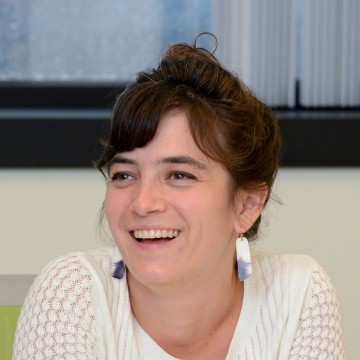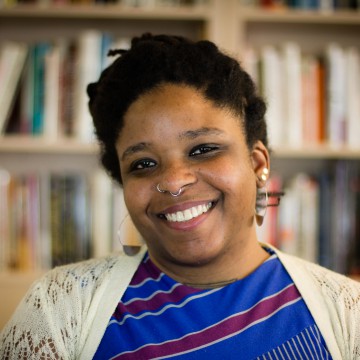Posted in Structural Transformation
March 27, 2018
“We cannot live for ourselves alone. Our lives are connected by a thousand invisible threads, and along those sympathetic fibers, our actions run as causes and return to us as results.”
– Herman Melville
In an earlier post in this series on networks and education, we explored the underlying vitality of connection and flow in our world and how this can create opportunity and health in our lives and in learning. According to network theory and practice, it can make a big difference when we are aware of who is and is not connected and then act intentionally to build and leverage relationships in both number and quality. Stories from a variety of fields illustrate the phenomenon of small and great change being rooted in creating ties and flows between different actors and elements in a system.
Now let’s take a step back and ask, “What is a network?” A basic definition is that networks are nodes and links. That is, they are elements of different kinds (people, schools, other kinds of organizations) that are tied together (consciously or unconsciously) in some larger pattern by one or more types of connectedness–values, ideas, friends and acquaintances, likes, exchange, transportation routes, communications channels. Social networks, comprised of individual people or groups, can be experienced in person and also virtually.
In the world of education and learning, here are some of the ways networks show up:
- Open classrooms – Digital technology is used to connect students to a wide array of information and a diversity of community partners and real-world learning experiences both within and beyond a classroom’s walls. (e.g., CommunityShare)
- Communities of practice – Students, teachers, and school or district leaders connect their learning, engage in inquiry, and refine practice through learning webs within or across schools and districts.
- Community schools/schools robustly connected to local community ecosystem – Connections create opportunities for authentic learning, job readiness, and student resilience; wrap-around services ensure fuller suite of supports for students. (e.g., Dudley Street Neighborhood Initiative)
- Networks of schools – Schools are connected by their alignment to a model or philosophy, influencing a culture shift within the broader field of education.
- Movement networks/”networks of networks” – Collectives of schools or education organizations push for transformation in the field toward greater equity, democracy, “education as a public good” (e.g., National Public Education Support Fund).
- You (yes, you!) as a network (student, teacher, leader … all learners) – As individuals, we are (or can be) internally connected to multiple intelligences and ways of knowing–analytical/intellectual, embodied/somatic, emotional, spiritual.
The Value of Networks for Education and Learning
So what is the big deal about networks? Is there really anything new here? These are questions that come up, though seemingly less often over the past five years or so with the proliferation of various social media. On the one hand, networks have always existed as long as life has existed, so there is not anything new here. On the other hand, the various digital tools and technologies that have evolved to rapidly and dramatically shrink the world are showing us what more intricate and efficient forms of communication and exchange can make happen.
And while it is true that virtually all collaborative forms of social organization meet the basic definition of being a network (coalitions, alliances, organizations, communities), not all such forms leverage to the same extent what are called “network effects.” … To continue reading this post on the Education Week website, go to this link.
“You’ve got to keep asserting the complexity and the originality of life, and the multiplicity of it, and the facets of it.”
– Toni Morrison
February 20, 2018
I am becoming pretty good at compartmentalizing – focusing on the work that is right in front of me, even as more tragedy surrounds us and more outrage wells up within me. It’s certainly functional to be able to do that. But I don’t know that it’s always good. Part of me despairs. How many more people – and especially children – have to die needlessly? How is it that in other countries, people experience mental illness, firing from a job, expulsion from school, and all manner of personal tragedy without turning to mass killings? I want to be in the streets. I want to raise my voice with others in ways that will make a big and immediate difference. I want an end to politicians offering “thoughts and prayers.” I know there is power in prayer, and I also know that powerful prayer motivates powerful, compassionate action.
In a workshop the other day, we were exploring the ways that collaborative leadership practices support organizations and networks in pursuing broader diversity, deeper inclusion, and expanded equity and justice. Someone asked me if I really thought we would ever get closer to justice in this country, given the recent sharp turn we’re taking in the opposite direction. I offered two thoughts in response: (1) I think things are getting much better and much worse at the very same time. There is an expanding consciousness of the sacredness of human life and the interconnectedness of people and the planet; and many people who suffer under oppression are finding ways to resist and to build alternatives. That is all advancing and it’s good. And, the forces of racism, sexism, homophobia, zealotry, and more are also advancing, most recently with tacit and explicit support from the White House. (2) As a woman of faith, what keeps me going is anticipating that in 50 years, when people look back on this era, they will see it as the last moments of flailing by a dying beast. May it be so!
Our friends at Spirit in Action remind us that there are four interdependent ways to transform society: “reimagine culture, resist domination, reform institutions and recreate society.” Whichever of the “Rs” are in the center of your work, go forth with strength and power!
August 29, 2017
“For a seed to achieve its greatest expression, it must come completely undone. The shell cracks, its insides come out, and everything changes. To someone who doesn’t understand growth, it would look like complete destruction.”
In the late spring, we had an unseasonably sticky stretch of days where I live, and after school one day, my wife and I took our girls to a local swim hole to cool down. As we eased into the cold water, one of our seven-year-old twins clutched desperately to my torso, not yet willing to put more than a toe or foot in. As the sun beat down, I began to feel both the weight of her body and the ebb of my patience, and I managed to negotiate her to a standing position in water that came to her waist. She continued to clutch my arm vice-like with both of her hands.
After another few minutes it was definitely time for me to go under water. But Maddie was unwilling to release me. I continued to encourage her to let go first, to get her head and shoulders wet. Initially totally reluctant, she got to a point where she was in just up to her neck but was still anxiously squeezing my hand. We did a bit of a dance for a few minutes where she would get to the end of my finger tips with her right hand, seemingly ready to take the plunge, and then the same part-anticipatory part-terrorized expression came to her face and she was back against me.
I kept coaxing her, and then let her know that whether she let go or not, I was going under, and if she was still holding on to me, that she would be doing the same. “Okay, okay!” she yelled, stamping her feet and once again got to the tips of my fingers while breathing rapidly. And this time … she let go. She pushed off and immersed her entire body in the water. She came up shrieking but with a big smile on her face, a bit shocked but also more at home in the water, moving around quite gracefully, actually. She splashed me and laughed and then I dived in. A few minutes later she was swimming along next to me.
Read More
April 4, 2017
“You’ve got to keep asserting the complexity and the originality of life, and the multiplicity of it, and the facets of it.”
– Toni Morrison

Once again, I’ve been re-reading Niels Pfleaging’s short book Organize for Complexity (and eager for the release of the English version of Complexitools) amidst the growing demand we are hearing at IISC from people who want to liberate their organizations and themselves to be able to intelligently respond to change and to come back to life! Here’s the gist – as things shift more, and more rapidly, some people’s inclination may be to try to exert greater control or dig in to what is familiar, but does not work. The more one does so, the worse things can get. As Pfleaging writes, we see a “high price for the illusion of control.” Within organizations this takes the form of various gaps – social, functional, and temporal – that make them increasingly irrelevant, ineffective and irresponsible.
Responding to complexity requires (to borrow a phrase from Eugene Eric Kim) new muscles and mindsets.
Read More
February 7, 2017
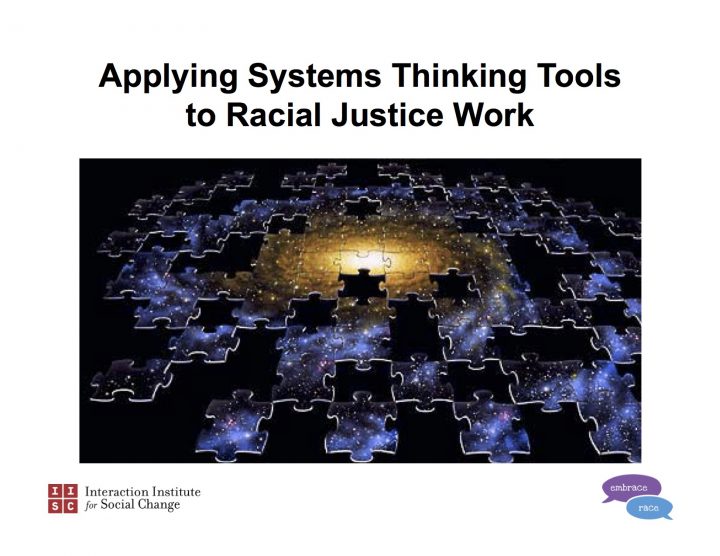 “Systems thinking without systems thinkers will change nothing.”
“Systems thinking without systems thinkers will change nothing.”
A few months ago, Andrew Grant-Thomas of EmbraceRace and I presented an interactive session at the Facing Race Conference in Atlanta on systems thinking tools to address structural racism. We had offered a similar session at the 2014 conference in Dallas with our colleague Cynthia Silva Parker, and as it turns out, both sessions were done in a standing-room-only situation. Clearly there is a hunger for these skills and tools among racial justice advocates.
Systems thinking as a field has been around for a few decades, but its direct application to structural racism has not been widespread. Even where racism has been discussed systemically, activists have often craved practical skills and tools to identify and align strategically around areas of intervention that will yield the greatest return for effort.
In our session in Atlanta, we spent some time talking about and exploring the “thinking” side of systems thinking. We presented a few systems thinking sayings and quotes from different writers and practitioners, and invited participants to read and reflect on them and talk with others about the ones that most caught their attention. A specific request was to pay to attention to how the words impacted their thinking and perspectives. There were, in just the span of about 10-15 minutes, some remarkable insights reported. And so I invite you to do the same, to share any impacts, and also to add your own favorite systems thinking sayings. Read More
December 19, 2016
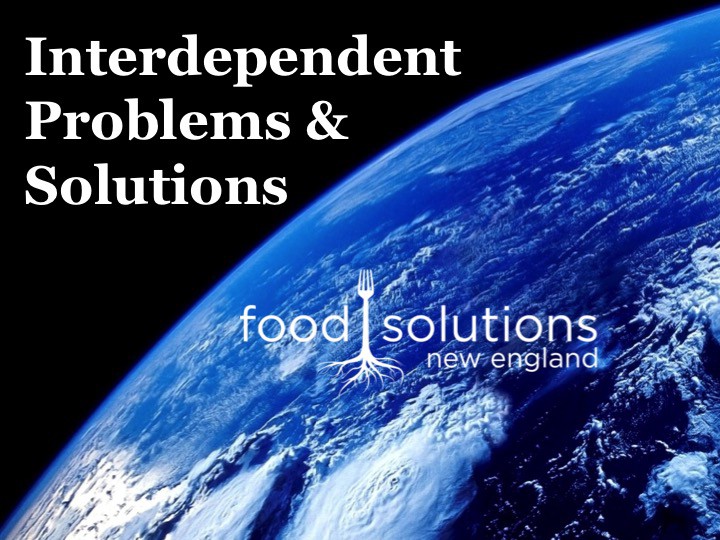
The following post recently appeared on the Food Solutions New England (FSNE) website. I have had the great pleasure and privilege of supporting FSNE for the past five years as a network design and development consultant, facilitator, and trainer. As we near the end of 2016, a year that has proven challenging to many, I continue to find some of my greatest hope in the work of this important and unique initiative, grounded in the tremendous commitment and generosity of its shared (net) leadership. This is not the first time that I have written about the work of FSNE. Other posts include: Distribution, Diversity, Dignity: Networking the “Business Case” for a Regional Food System; Leveraging a New (Food) System Narrative; Racial Equity Habit Building 2.0; Peeling Away Layers for Impact in Networks for Change; and Networks: A Love Story. The post below speaks specifically to the past year-plus of work identifying “leverage areas” for coordinated collective action …
In 2015, the Food Solutions New England (FSNE) Network Team began a year-long process to better understand how we could support the region in achieving the New England Food Vision. The Vision describes a future in which at least 50% of our food is grown, raised, and harvested in New England and no one goes hungry. It looks ahead to the year 2060 and sees farming and fishing as important regional economic forces; soils, forests, and waterways cared for sustainably; healthy diets as a norm; and racial equity and food justice promoting dignity and well being for all who live in New England. Read More
December 6, 2016
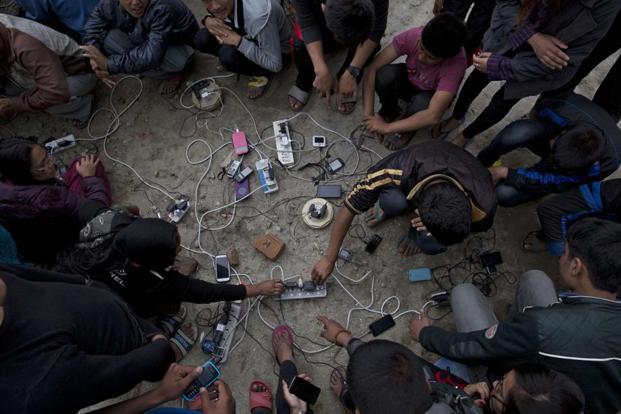
Over the recent Thanksgiving break, I had the opportunity to meet with friends of extended family members, a couple who are engaged in both disaster relief and community planning work. She is from Nepal and he is from the U.S., and together they relayed a story about their time visiting Nepal during the devastating earthquake of 2015.
The two of them were hiking in the mountains when the 7.8 magnitude quake struck. Shaken but not hurt, they made their way back to Katmandu as quickly as possible to check in on family members and then to offer their assistance to others. Originally assigned the task of loading water jugs on trucks, they then volunteered and were enlisted for their translation skills, and headed out to some of the hardest hit villages with international relief workers. Read More
November 22, 2016
Dreading the conversation over the Thanksgiving table this week?
Not looking forward to reconnecting with a friend, colleague or relative who thinks very differently than you?
How about inviting them into a different kind of conversation—one that enables folks to hear one another across deep divides and to share differing perspectives without inflicting excessive injury.
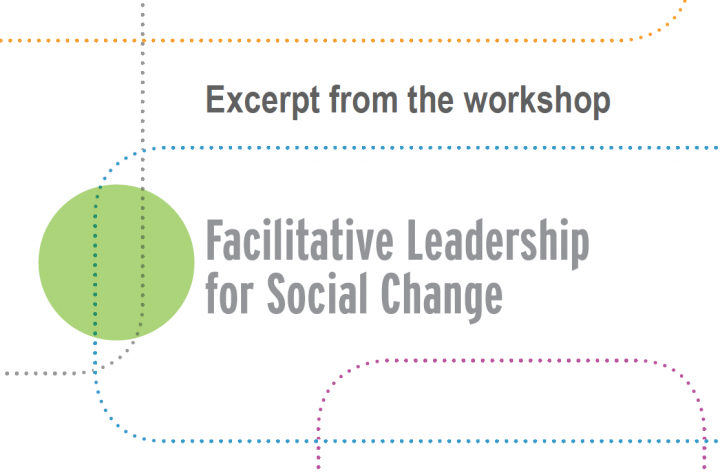
Try introducing the practices of deep listening to unlock a conversation where everyone can both speak their truth and hear other folks’ truths without convincing, berating, or arguing.
Try introducing the practices of deep listening to unlock a conversation where everyone can both speak their truth and hear other folks’ truths without convincing, berating, or arguing. It’s harder than you might think, especially when you think you are right. But remember, these loved ones probably think they are right, too. And, in entrenched conflicts, everyone generally tends to view themselves as the victim and others as holding all the power. Deep listening can be a powerful way to break through all of that.
In these times, deep listening seems more necessary than ever. So, take the risk to really listen to those around you without trying to convert them to your way of thinking. And ask them to take the risk to really listen to you too, without trying to convert you to their way of thinking. Some of what you hear may make your blood boil. Some may make you shake your head in wonder or despair. Some will make you want to ask more questions. This is good – seeking to understand does not imply you agree. Only that you are willing to explore. In the end, if you can use the guidelines shared below, you’ll create a safe space for conversation where you’ll end up still loving one another and you’ll be better informed and better able to engage in the tumult that is our political space this holiday season and beyond. Let us know what you learn!
Tips for Deep Listening
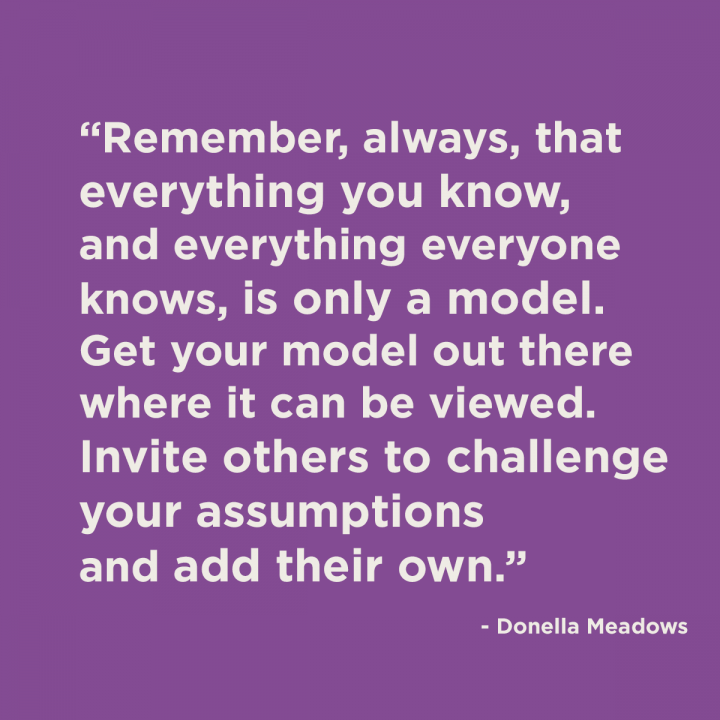
November 22, 2016
Many of us who identify politically as left of center, and who work in nonprofits or foundations, have been upset, shocked, angry, sad, disappointed and more about the election of Donald Trump last week.
In reaction to this loss, many are awakening to the white supremacist (alt-right) forces gaining strength in our county. Many people are experiencing a greater degree of fear for our nation and for their safety than ever before. In the last week, I have witnessed a few reactive behaviors that are not going to serve us through this time. If we don’t stop ourselves from practicing these behaviors, we are in danger of pursuing short-sighted strategies that end up preserving the status quo, rather than taking advantage of this moment to push us forward toward a greater force of woke people standing for justice.

Read More
August 1, 2016
Watching intermittent coverage of the Democratic National Convention my heart softened when I heard New Jersey Senator Corey Booker remind those listening that “Patriotism is the love of country, but you can’t love your country if you don’t love your countrymen.” He went on to define love as ‘being there for each other…empowering each other…finding common ground…and building bridges across differences…’ in pursuit of a common goal. He articulated a beautiful and hopeful vision of a nation of love as a free people, living interdependently. Later on during the convention, Broadway stars gathered on stage to sing the American classic, “What the World Needs Now is Love.”
It gave me a feeling of hope, not necessarily in the Party per se, but in the power of love to captivate the collective imaginations of millions of people who believe that another world is possible, and we can make it a better one for all of us.
Read More
July 21, 2016
The tagline of the Black Lives Matter movement is “Free from violence. Free from oppression. Free to be our full selves. Free to love. Freedom Now.” Their rallying cry is a powerful quote from Assata Shakur. “It is our duty to fight for our freedom. It is our duty to win. We must love each other and support each other. We have nothing to lose but our chains.”
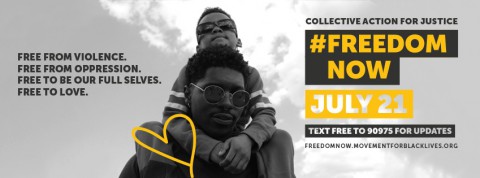
The past few weeks have reminded me that loving and supporting each other requires us not only to fight but also to mourn together. There are opportunities around us every single day. The recent shootings of police, alongside the seemingly endless list of black and brown civilians shot by police, seem to have awakened the nation in a new way. That is good, as long as we can “stay woke” long enough to do something meaningful. Still, I can’t help but wonder what hushed and gentle conversations we’d be having on television and in communities, workplaces, and houses of worship without the deaths of the police officers. Isn’t the almost daily murder of black and brown people enough to cause somber reflection? Aren’t the calls for action coming from grieving families, activists, celebrities, athletes, and everyday folks enough to make and sustain meaningful change?
Read More
July 12, 2016
This weekend I attended CommonBound 2016, the bi-annual conference of the New Economy Coalition (NEC), “…a [160-member] network of organizations imagining and building a future where people, communities, and ecosystems thrive. Together, we are creating deep change in our economy and politics—placing power in the hands of people and uprooting legacies of harm—so that a fundamentally new system can take root.”
As one might imagine given the mission, the conference was attended by people working on a wide range of projects from public engagement, participatory budgeting, and environmental sustainability to cooperatives, reparations, community land trusts, fossil fuel divestment and more. The 900 attendees were all in some way engaged in doing the very important work of organizing, shifting culture, developing alternative institutions and creative solutions, writing, resisting, and fundraising. All towards a goal of a society that is more just, more democratic, and more sustainable. NEC itself is fast becoming a network of networks engaging groups in the cooperative movement, movement for black lives, labor movement, student divestment network, environmental movement and more. Held in Buffalo, NY, the conference had all the makings of a pivotal moment in movement history, where a true intersectional approach to changing society for the better could be nurtured. The opportunities for significant connections and collaborations to develop were endless.
Read More
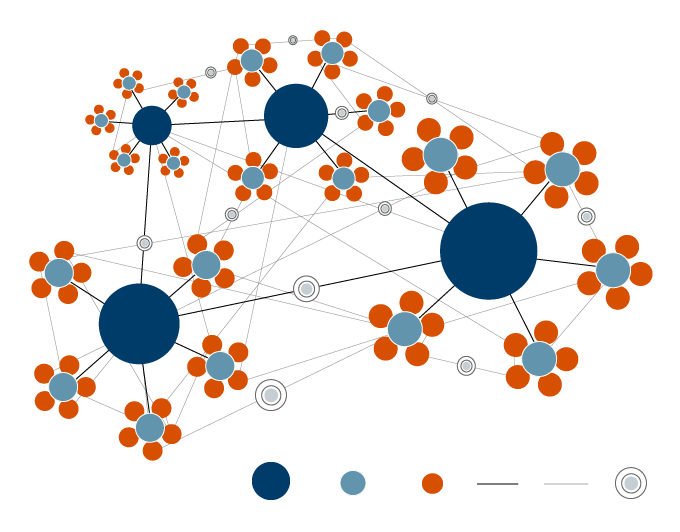
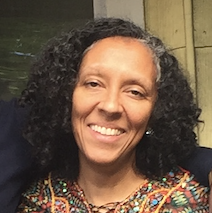


 “Systems thinking without systems thinkers will change nothing.”
“Systems thinking without systems thinkers will change nothing.”



